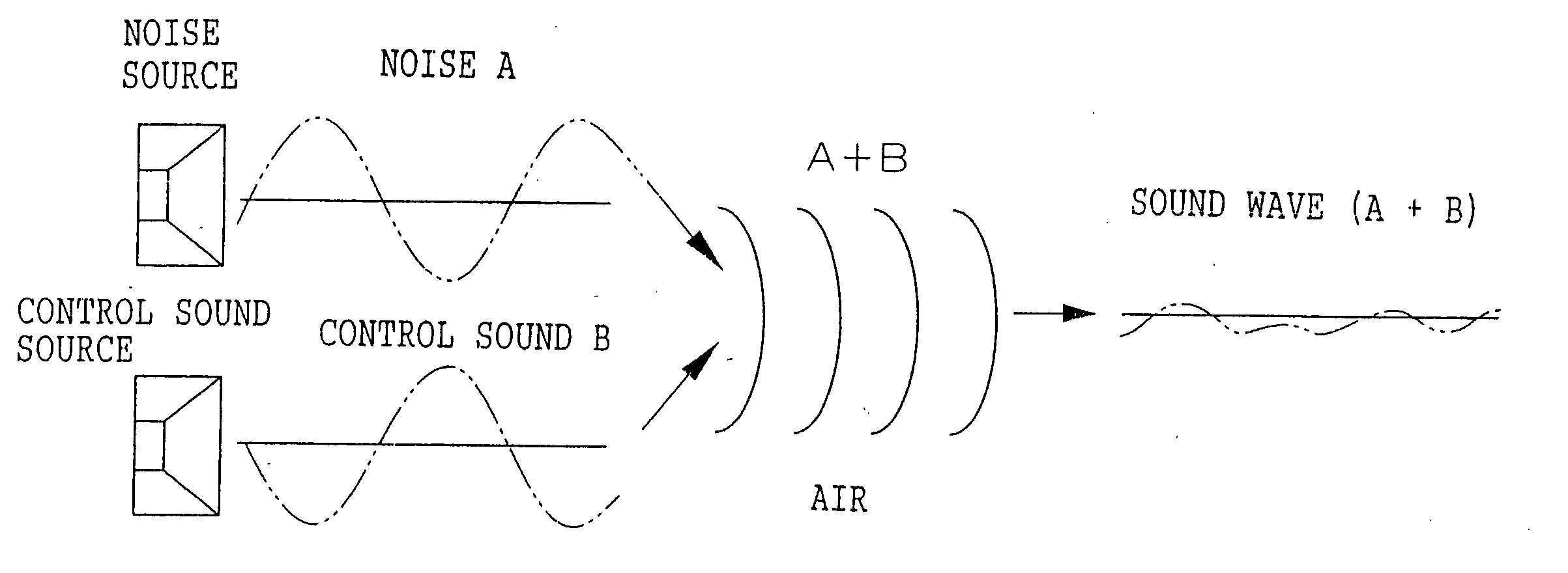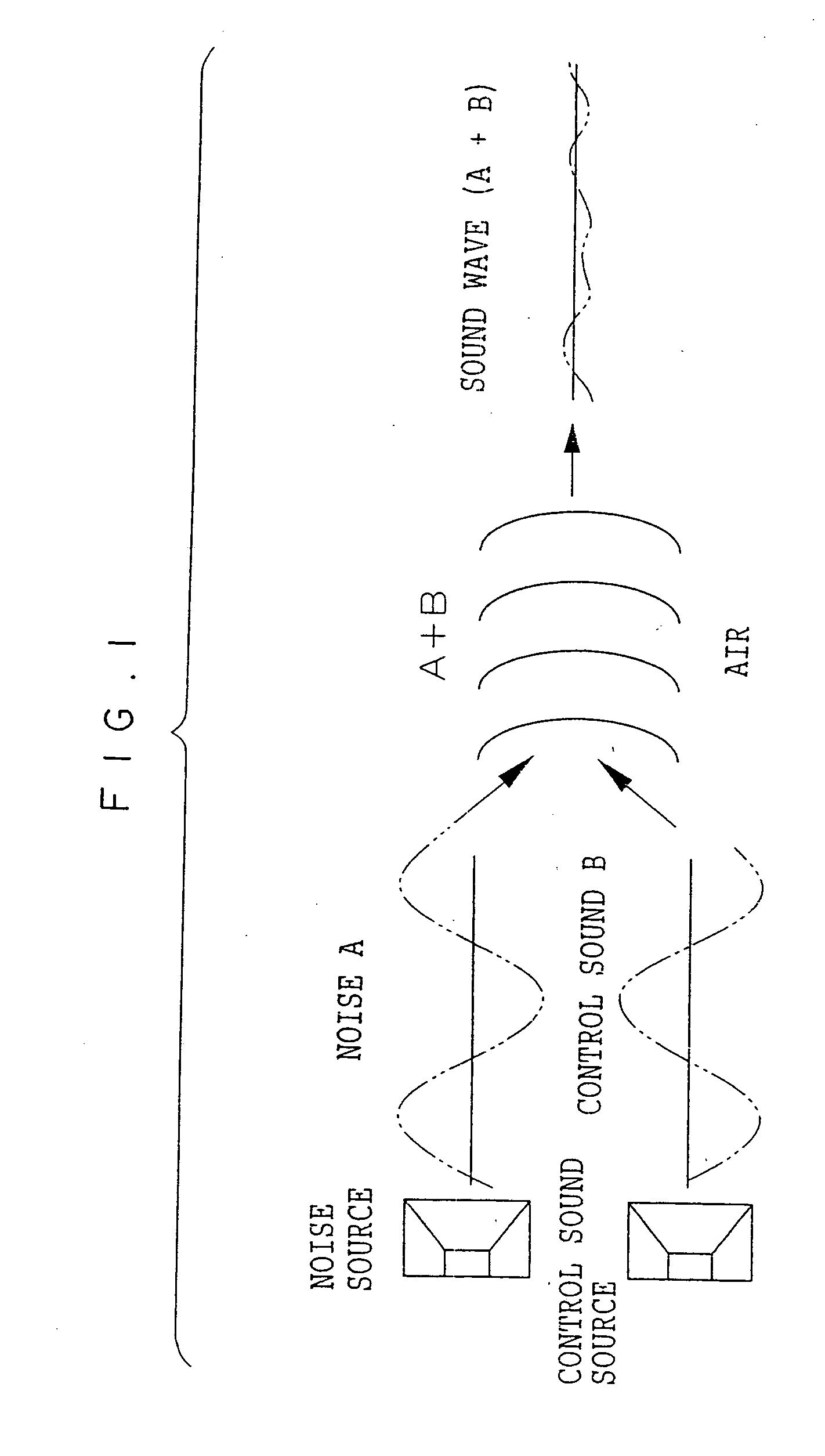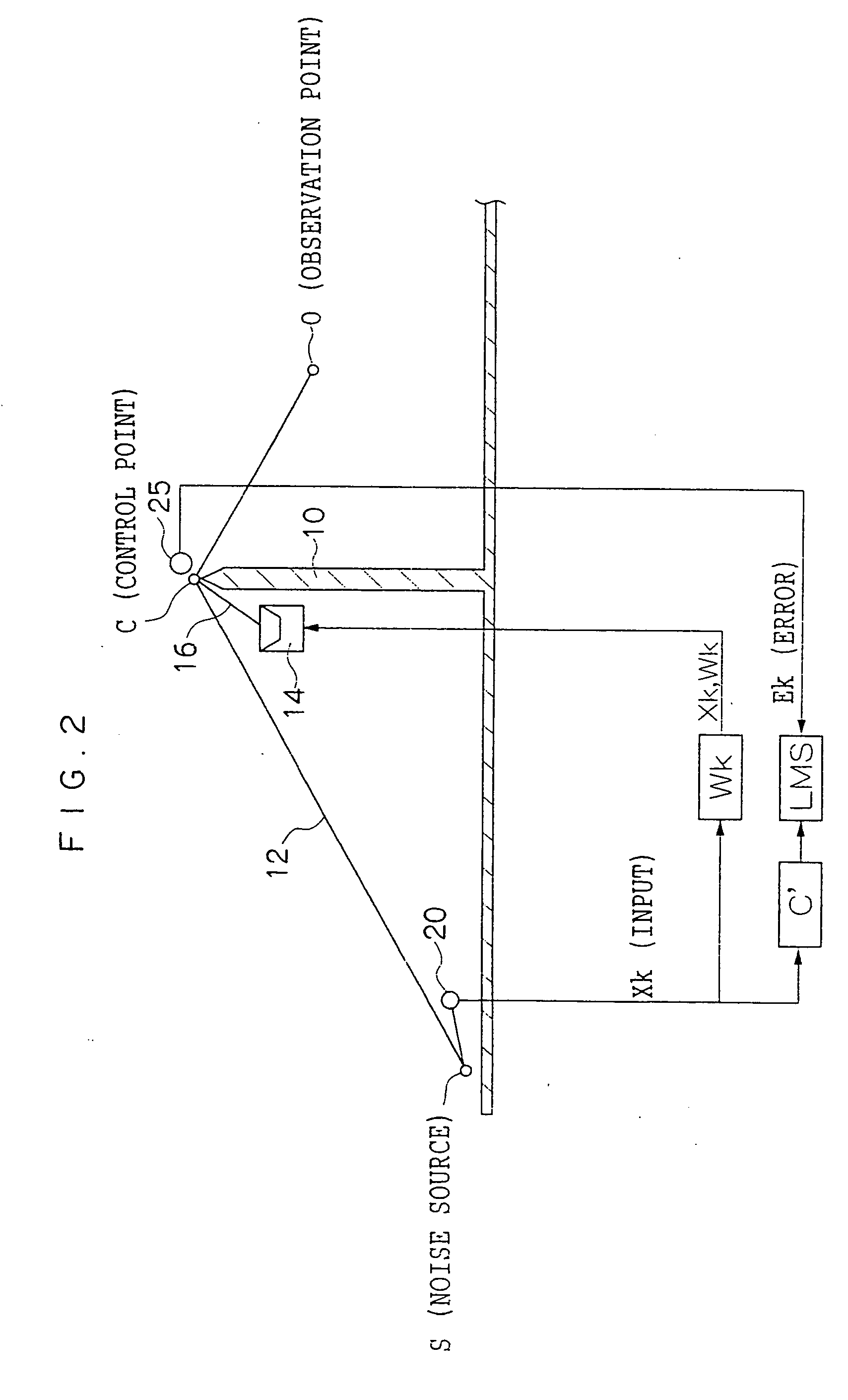Noise reducing device
a noise reduction and noise technology, applied in the direction of sound producing devices, electrical transducers, instruments, etc., can solve the problems of large social problems, large noise reduction effect, and large noise reduction
- Summary
- Abstract
- Description
- Claims
- Application Information
AI Technical Summary
Benefits of technology
Problems solved by technology
Method used
Image
Examples
first embodiment
(Noise Reduction Control Zone)
[0053] In the present embodiment, as shown in FIG. 3A, sound barriers 10 of a predetermined height are disposed at both sides of an expressway 100 parallel to the road in order to reduce noise emitted from an automobile that is a noise source S. The sound barriers 10 are configured by metal panels such as iron panels that are disposed vertically with respect to the road surface. It should be noted that noise reducing reinforcement panels may also be disposed at the noise source S sides of the sound barriers 10. It is preferable for the noise reducing reinforcement panels themselves to have a bass noise reducing capability of at least 10 dB. For example, a panel where a noise absorbing material such as a glass wall is adhered to the panel surfaces at the noise source S sides can be appropriately used.
[0054] When an observation point O is set at the outer side of the sound barriers 10, noise propagates from various directions to the observation point O...
second embodiment
[0093] A traffic noise reducing system pertaining to a second embodiment has the same configuration as that of the first embodiment, except that the noise control units of the second embodiment are configured to include a single sound source microphone and plural speaker units. Therefore, description of identical portions will be omitted and only the points of difference will be described.
[0094] The noise control units of the present embodiment are plurally disposed along sound barriers. Because the configurations of the noise control units are the same, one noise control unit will be described. As shown in FIG. 15, a noise control unit 104 is disposed at the sound source side of the sound barrier 10 and includes plural (three in the drawing) speaker units 141 to 143 and a single sound source microphone 20a.
[0095] The speaker units 141 to 143 are arranged at predetermined intervals along the sound barrier 10 and respectively include speaker arrays 401 to 403 in which plural (nine ...
third embodiment
[0107] A traffic noise reducing system pertaining to a third embodiment has the same configuration as that of the first embodiment, except that the noise control units of the third embodiment are configured to include a single sound source microphone and plural speaker units. Therefore, description of identical portions will be omitted and only the points of difference will be described.
[0108] As shown in FIG. 17, a noise control unit 106 includes plural (three in the drawing) speaker units 144 to 146 and a single sound source microphone 20b disposed at the noise source side of the sound barrier 10. The speaker units 144 to 146 are arranged at predetermined intervals along the sound barrier 10 and respectively include speaker arrays 404 to 406 in which plural (nine in the drawing) linear array of flat loudspeakers are avenged in one row along the sound barrier 10. The sound source microphone 20b is disposed at the incoming side of the automobiles with respect to the speaker unit 14...
PUM
 Login to View More
Login to View More Abstract
Description
Claims
Application Information
 Login to View More
Login to View More - R&D
- Intellectual Property
- Life Sciences
- Materials
- Tech Scout
- Unparalleled Data Quality
- Higher Quality Content
- 60% Fewer Hallucinations
Browse by: Latest US Patents, China's latest patents, Technical Efficacy Thesaurus, Application Domain, Technology Topic, Popular Technical Reports.
© 2025 PatSnap. All rights reserved.Legal|Privacy policy|Modern Slavery Act Transparency Statement|Sitemap|About US| Contact US: help@patsnap.com



